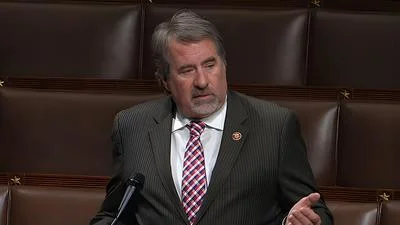Under the Antiquities Act, President Biden designated the Baaj Nwaavjo I’tah Kukveni – Ancestral Footprints of the Grand Canyon National Monument in northern Arizona on August 8, creating the country's newest National Monument and marking the fifth National Monument created by President Biden.
"With this historic designation, President Biden is permanently safeguarding the magnificent rimlands that flank the Grand Canyon, their rich biodiversity, and life-giving springs and aquifers," Southwest Director at the Center for Biological Diversity Taylor McKinnon said. "On behalf of our members and supporters, the Center for Biological Diversity extends our deepest gratitude to Havasupai, Hopi, Navajo and other Tribal leaders who have sought land protections for generations, and to the president for heeding their wisdom and leadership."
By utilizing the authority granted by the Antiquities Act, President Biden officially established the Baaj Nwaavjo I’tah Kukveni – Ancestral Footprints of the Grand Canyon National Monument in northern Arizona on August 8. This action not only resulted in the formation of the nation's latest National Monument but also represents the fifth National Monument instated by President Biden.
According to a fact sheet issued by the White House, the Baaj Nwaavjo I’tah Kukveni – Ancestral Footprints of the Grand Canyon National Monument is designed to safeguard almost 1 million acres of public lands adjacent to Grand Canyon National Park. Within this new monument's boundaries, numerous cultural and revered locations of great significance to Tribal Nations in the Southwestern United States will be preserved. These encompass the Havasupai Tribe, Hopi Tribe, Hualapai Tribe, Kaibab Band of Paiute Indians, Las Vegas Paiute Tribe, Moapa Band of Paiutes, Paiute Indian Tribe of Utah, Navajo Nation, San Juan Southern Paiute Tribe, Yavapai-Apache Nation, Pueblo of Zuni, and the Colorado River Indian Tribes. Notably, these sites comprise Gray Mountain, known as Dziłbeeh in Navajo, which holds a vital place in Navajo ceremonial songs, narratives, and traditions.
The Baaj Nwaavjo I’tah Kukveni – Ancestral Footprints of the Grand Canyon National Monument has been established to safeguard and uphold the abundant cultural, ecological, scientific, historical, and picturesque significance inherent to the expansive Grand Canyon vicinity, according to the White House fact sheet. By designating this monument, these locations are shielded to serve cultural and spiritual purposes, while concurrently acknowledging existing permits for livestock grazing and maintaining access for hunting and fishing activities.
Comprising three distinct regions situated to the south, northeast, and northwest of Grand Canyon National Park, the new monument is demarcated by the Kanab watershed boundary and the Kanab Creek drainage in the northwestern sector. It abuts the Havasupai Indian Reservation and Navajo Nation in the southern sector, extending from Marble Canyon to the periphery of the Kaibab Plateau in the northeastern sector. Encompassing a total expanse of 917,618 acres, this monument is administered by the Bureau of Land Management within the Department of the Interior, as well as the U.S. Forest Service under the purview of the Department of Agriculture.
According to the Center for Biological Diversity, the boundary of the monument mirrors the 2012 Northern Arizona withdrawal implemented by President Obama, which enacted a 20-year prohibition on new uranium mines in the vicinity of the Grand Canyon. Despite the introduction of federal legislation aimed at establishing enduring safeguards, this legislation was never ratified. The act of uranium mining around the Grand Canyon has resulted in harm to sacred sites and has adversely impacted both the depletion and contamination of aquifers that supply water to the well-known canyon's springs and watercourses, the Center for Biological Diversity stated. With President Biden's declaration, the prohibition on new mines becomes a permanent measure. However, uranium mining operations existing prior to the 2012 withdrawal, such as the Pinyon Plains mine near the South Rim of the Grand Canyon, are excluded from this prohibition.









